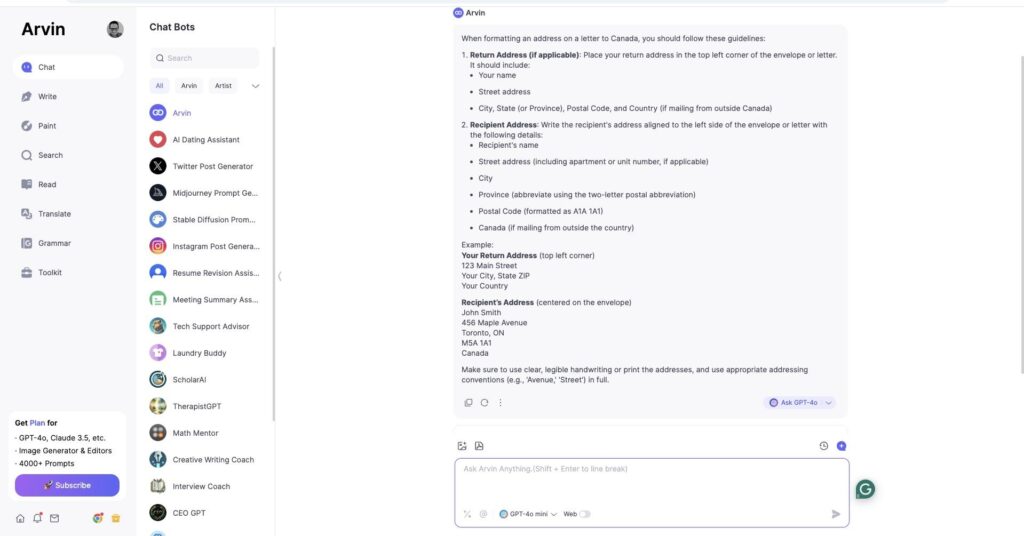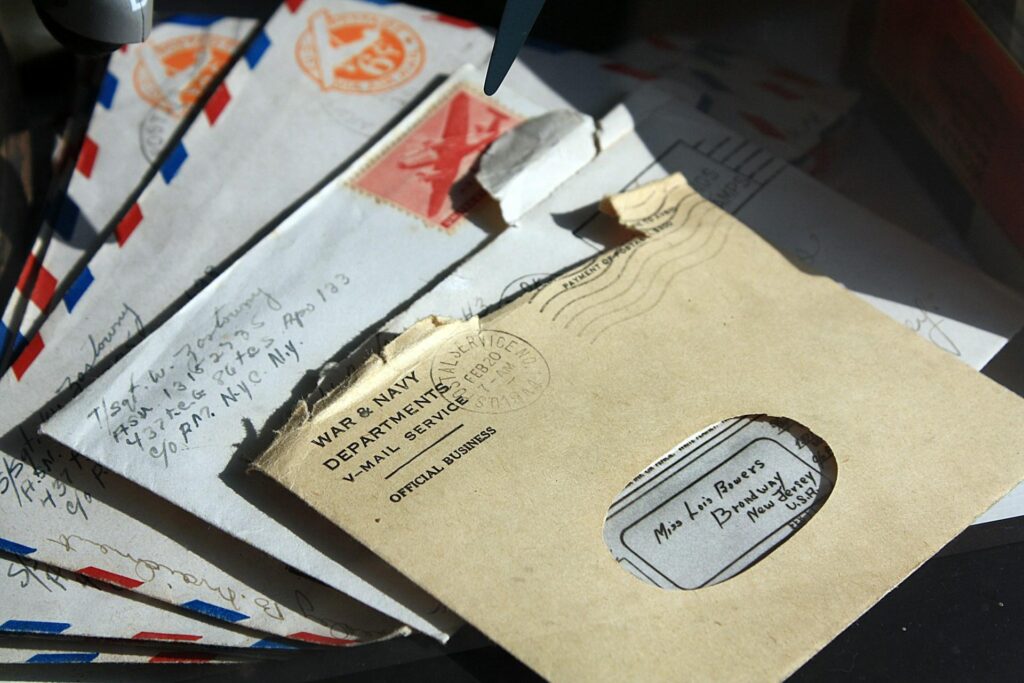Letter writing might be a dying art, but learning how to write an address is still really important.
In the US alone, in 2020, approximately 14 billion letters were sent and received. So, while letter writing is nowhere near as prevalent as it used to be since the advent of email, it’s still a prominent method of communication.
Many of us need to write letters when applying for jobs, contacting a utility company, or making a claim on our health insurance. There are so many reasons why letter writing is important, and even if you don’t do it weekly, you will need to send a letter from time to time.
Therefore, learning how to write an address on a letter is crucial. If you don’t learn how to do this, there’s no way your letter will reach its intended destination.
To help you, we’ve put together this complete guide. In it, we reveal the basics and show you exactly how to write an address on a letter and an envelope. We also show you how to use AI tools to discover address-writing conventions in different countries.

Addressing a letter: Let’s start with the basics
If you’re planning to send a letter in the post, you need to find out the recipient’s address. The obvious way to do this is to ask the person what their home or business address is.
However, if this isn’t possible, you can use services like the Whitepages. If you’re looking for a business address, a simple Google search for the business will likely reveal the information you need.
To ensure that your letter gets to its intended destination, you must find and verify the following information:
- The recipient’s name, including their designation.
- A business name or the name of the building (if applicable).
- The number of the house, apartment, or building and the name of the street.
- The village, town, or city that the location is in.
- Details of the state and the country.
- The correct zip code, postal code, or PO Box.
The more accurate information you provide when writing an address on a letter, the more chance you have of it reaching its destination.
How to write an address on a letter
If you’re writing a formal letter, it’s best practice to write your own address in the top-right corner. You, as the sender, should include the following details:
- Your full name.
- The company’s name (if relevant).
- Your address, including a building name or number, a street, the town, and state.
- A PO Box, zip code, or postal code.
Example – how to write an address on a letter as the sender
Mr Anthony Burgess
SLK Associates
410 Denton Way
Chicago, IL
PO BOX: 44555
Should you include other contact details?
Underneath your address, you may also want to include some of your other contact details. This would be helpful if you would prefer the recipient to get back in touch with you in a different way.
There’s absolutely no harm in listing your telephone number and email address in the lines that follow your address. In fact, this is standard practice among some people and is a good way to ensure that the recipient has all of your contact details without asking for them.
How to write an address on an envelope
When you’re finished writing your letter, you will need to slide it into the envelope. Then, you must write the address on the front of the envelope clearly. Ideally, the name and the address should be clearly stated in the center of the envelope.
If you don’t have particularly clear handwriting, we recommend typing the address and printing it off. If your handwriting is unclear, the letter might get lost in transit. Here’s what you should include on the front of the envelope when addressing it:
- The recipient’s full name.
- A company name (if relevant).
- The recipient’s full address, including a building name or number, a street, the town, and state.
- A PO Box, zip code, or postal code.
- The country – this isn’t necessary on domestic letters, but you can include it if you wish.
Example – how to write an address on a letter (to the recipient)
Dr. Angela Shelton
2140 Marshall Drive
Kansas City, MO
64105
Should you include the sender’s address on the envelope?
Some people like to include the sender’s address on an envelope, as well as the recipient’s. If you want to do this, we recommend writing it on the back of the letter rather than on the front. To avoid confusion, you should clearly state that the address enclosed belongs to the “Sender”.
Including the sender’s address will help if the letter gets misplaced, but it’s not necessary. After all, if you’ve written a formal letter, you should have included your address at the top, as already explained. Then, if the recipient wishes to write back, they can take your address from the top of your letter.
How to write an address for international post
If you’re sending a letter internationally, you need to make a few minor adjustments. You should begin by checking for address-writing conventions in the country to which you’re sending the letter. After all, there are different conventions in France and the United Kingdom, for example.
But the main thing to remember is that you must include the country you’re sending the letter to, which isn’t necessary when writing domestic addresses.
Assuming you need to write a letter to a contact in the UK, below is an example of how you might address the letter.
Example – how to write an address on a letter (for international post)
Mrs Sarah Bach
40 Ellerton Close
Birmingham
West Midlands
B90 4TT
England, United Kingdom
Given that there are so many different conventions for addressing letters worldwide, you can use our AI tools to guide you.
For example, if you’re sending a letter internationally, you could prompt Arvin to show you “how to format an address on a letter to Canada,” as shown below:

You can even provide our chat tool with the full address and ask it to format it correctly for you. This will save time and prevent errors when you’re addressing an envelope for international post.
Addressing a letter correctly – what else do you need to know?

While letter writing isn’t as common as it used to be, there are still many examples when addressing and sending a letter is necessary.
So, if you find yourself in a situation where you need to send a letter, make sure you follow these tips before posting it:
Place the stamp correctly
If you’re sending a single letter domestically, you can attach one stamp to the envelope. However, if your letter is heavy, if you’re sending a package, or if you’re posting it internationally, you may have to purchase additional stamps.
In this case, we recommend visiting your local post office in advance to ensure you pay the correct amount for the letter. If you don’t, the charges will be passed on to the sender, causing embarrassment on your part.
For a standard domestic letter, place the stamp in the top-right corner of the letter. Make sure it’s straight and fixed properly in place.
Write or type the address clearly
It’s extremely important to write clearly when addressing a letter. If you’re writing the address by hand, use block capitals and black ink to make it clear.
Alternatively, type the address on your computer and print it out before sticking it to the envelope. You can use a standard typeface like Arial or Times New Roman so the postal service can clearly read the address.
If you scribble the address inaccurately or your writing is ineligible, the letter is unlikely to reach its intended destination.
Only include the name and address of the recipient
When writing on an envelope, only include the name and the address of the recipient. So, don’t write any other information on the envelope, as it’s not required.
Moreover, some countries use automatic sorting machines for their mail, so including unnecessary information might confuse the machine and cause your letter to be delayed.
Therefore, the envelope should only include the name, address, and stamp as you place it in the mailbox.
Check your spelling
Though a typo might not cause your letter to be lost, spelling a person’s name or street wrong might lead to delays. Moreover, spelling a person’s name wrong on a letter is impolite, and it doesn’t give off a good impression, which is important if you’re applying for a job.
You can use our free Grammar Checker before sending your letter. Use it to check your spelling and grammar throughout the letter and on the envelope itself. This will save you from making any embarrassing mistakes when sending the letter out.
Be aware of abbreviations
When writing an address on a letter, you can use some abbreviations. This is particularly true when referring to states. Instead of New York, you can write NY, and you can use PA or Pennsylvania. Other useful abbreviations to consider when writing your letter include:
| Full word | Abbreviation |
| Apartment | APT |
| Avenue | Ave |
| Boulevard | Blvd |
| Drive | Dr |
| Lane | Ln |
| Parkway | Pkwy |
| Road | Rd |
| Street | St |
| Suite | Ste |
Recap: How to write an address on an envelope correctly
Regardless of the reason for writing a letter, you must make sure the address on the envelope is accurate and clear. If it isn’t, your letter probably won’t reach its intended destination.
We advise you to use the examples, tools, and tips presented above to correctly address an envelope. But remember, always double-check the information you have is accurate and take care when writing or typing the address.
Also, be mindful that different countries have preferred formats for letter writing, so use our AI tools to find out the correct format, depending on where you’re sending the letter to.
How to write an address on a letter FAQ
How do you write an address for a letter?
You should write an address for a letter in block capitals using black ink. Alternatively, type the address on your computer and print it off before sticking it on the envelope. It’s crucial that the address is clearly legible, or it may not reach its destination.
What is the correct address format?
The correct address format is as follows: Name, company, house number and street name, city, state, and zip code. If you’re sending an address internationally, you should also include the name of the country. Given that some countries have different rules for formatting addresses, you can use our AI tools to generate the required format before sending your letter.
What is an example of an address?
An example of an address is Steve Doe, 422 Oak Lane, Kansas City, MO, 64101, United States of America. You can use this as a template for addressing domestic mail in the US.
What is the politically correct way to address a letter?
The PC way to address a letter is ensuring that you use the correct designation (Mr, Mrs, Dr, etc.) when addressing the recipient. You should also spell the person’s name correctly and make sure all other aspects of the address are clearly written and legible.






